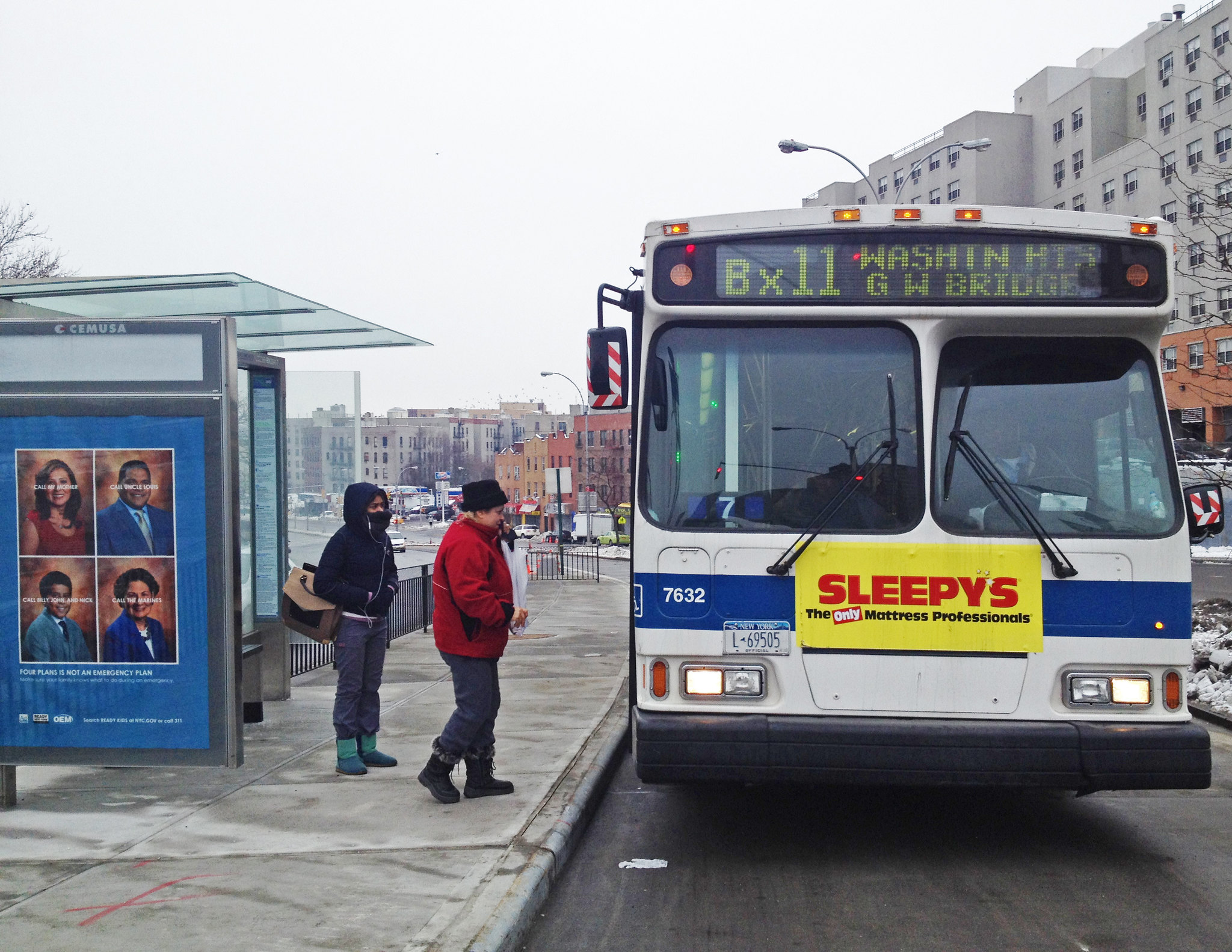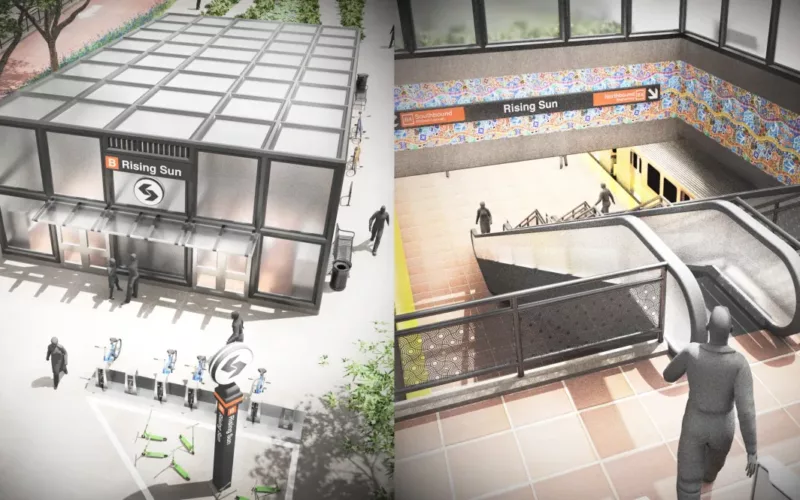
In a new report, the Bus Turnaround Coalition calls on Governor Andrew Cuomo and Mayor Bill de Blasio to advance an equitable recovery from the COVID-19 crisis in New York City by making bus improvements a top priority.
“Fast Bus, Fair Recovery“ issues five recommendations for the MTA and NYC DOT to make bus service faster and safer as New York comes back from the COVID-19 crisis.
During the COVID-19 emergency, transit moved hundreds of thousands of essential workers to their jobs and kept New York functioning. People of color — especially Black people — account for a disproportionate share of these workers.
The bus system has also retained more of its pre-pandemic ridership (nearly 50%, according to the MTA), than the subways (about 18%). In other large transit cities, this trend has extended into the recovery period as riders express a preference for less enclosed travel.
But as New York enters Phase 2 of its reopening, the return of traffic congestion threatens to overwhelm the bus system. And if riders come back to slow, unreliable bus service as the city reopens, New York’s recovery will sputter. People who have the option to drive will abandon the bus and jam the streets, while the essential workers who ride the bus and got the city through the worst of the pandemic will be saddled with appallingly bad service.
The tools to avoid this scenario are no secret: Faster boarding procedures, on-street busways and bus lanes, and service changes that respond to shifting ridership patterns. Better bus service is also safer bus service — when buses are fast and reliable, the capacity of the system increases and riders can spread out more on board.
The Bus Turnaround Coalition presents five recommendations for the MTA and NYC DOT to follow through on the urgency of this moment. This is an agenda both for New Yorkers who relied on transit throughout the pandemic, and New Yorkers who return to transit as the city reopens. Governor Cuomo and Mayor de Blasio must direct the MTA and NYC DOT to adopt these measures and make the bus system an effective travel option.
- Revise schedules each month and reallocate service to meet needs of Black, brown, and low-income New Yorkers. Implementing pre-pandemic schedules is not enough because ridership patterns have changed. Compared to typical ridership, for instance, Black New Yorkers comprise a higher share of the essential workforce most reliant on transit during pandemic conditions. To minimize crowding, the MTA should continue to shift service from lightly-used routes to heavily-used routes.
- Transition seamlessly from rear-door boarding to all-door boarding. Contactless fare payment using the MTA’s new OMNY fare system will be faster and reduce the risk of COVID-19 transmission. Instead of moving back to the old, slow boarding method where every rider pays at the front door, the MTA should launch systemwide all-door boarding with the option to pay with OMNY at the rear door, before the end of 2020
- Remove police from fare compliance on buses and decriminalize fare evasion. As riders return to the system and the MTA moves toward all-door boarding on buses, the agency should work with district attorneys to avoid criminalizing New Yorkers, in particular Black, brown, and low-income New Yorkers. The MTA’s civilian “Eagle Teams” should also be overhauled to approach fare compliance with a customer service orientation, guided by anti-bias and de-escalation principles. The teams should not stop buses to conduct fare checks. To address issues of safety, the MTA should join the ranks of transit agencies increasing the presence of unarmed “ambassadors” on board.
- Make mask-wearing on-board the easy choice. The foundation for safe transit operations with significant ridership is universal mask-wearing. Evidence from other countries shows that once cities achieve very low rates of new cases, buses can operate safely even during standing-room-only conditions as long as everyone wears a mask. The MTA has a stock of 2 million masks to distribute to riders who do not have a mask as they board. This supply should be continually replenished, and masks should be available on buses via on-board dispensers.
- Preserve service improvements for essential workers and prevent car traffic from overwhelming bus service by quickly expanding busways and bus lanes. The 20 miles of busways and bus lanes the de Blasio administration intends to install this summer and fall are an encouraging step forward that will address some of New York’s worst transit bottlenecks. But more must be done to prevent rapidly rising car traffic from overwhelming bus service. As car traffic plummeted during New York’s “PAUSE” order, essential workers experienced faster, more reliable bus service than ever. Speeds increased 15% as buses sailed through congestion-free streets. Bus riders should benefit from service this fast every day, not because of extreme conditions during a pandemic. Mayor de Blasio should set his sights higher and strive for the 60 miles of bus lanes that the MTA has requested from City Hall.
The full report is available at busturnaround.nyc.
Since 2016, the Bus Turnaround Coalition, composed of the Riders Alliance, Straphangers Campaign, TransitCenter, and Tri-State Transportation Campaign, has worked to improve local bus service for more than two million daily riders throughout the five boroughs.
 On the Brink: Will WMATA’s Progress Be Erased by 2024?
On the Brink: Will WMATA’s Progress Be Erased by 2024?
The experience of being a WMATA rider has substantially improved over the last 18 months, thanks to changes the agency has made like adding off-peak service and simplifying fares. Things are about to get even better with the launch of all-door boarding later this fall, overnight bus service on some lines starting in December, and an ambitious plan to redesign the Metrobus network. But all of this could go away by July 1, 2024.
Read More To Achieve Justice and Climate Outcomes, Fund These Transit Capital Projects
To Achieve Justice and Climate Outcomes, Fund These Transit Capital Projects
Transit advocates, organizers, and riders are calling on local and state agencies along with the USDOT to advance projects designed to improve the mobility of Black and Brown individuals at a time when there is unprecedented funding and an equitable framework to transform transportation infrastructure, support the climate, and right historic injustices.
Read More